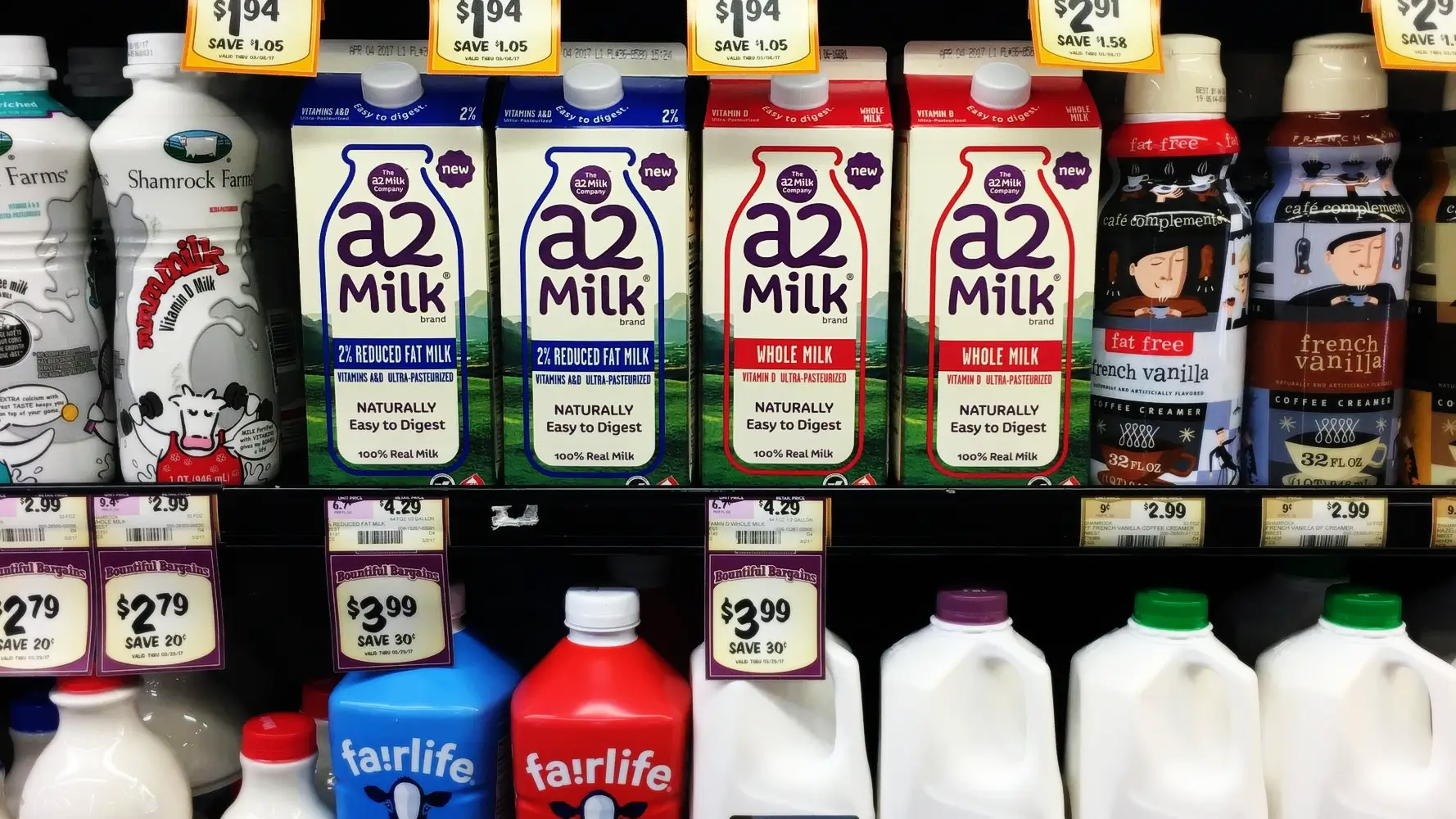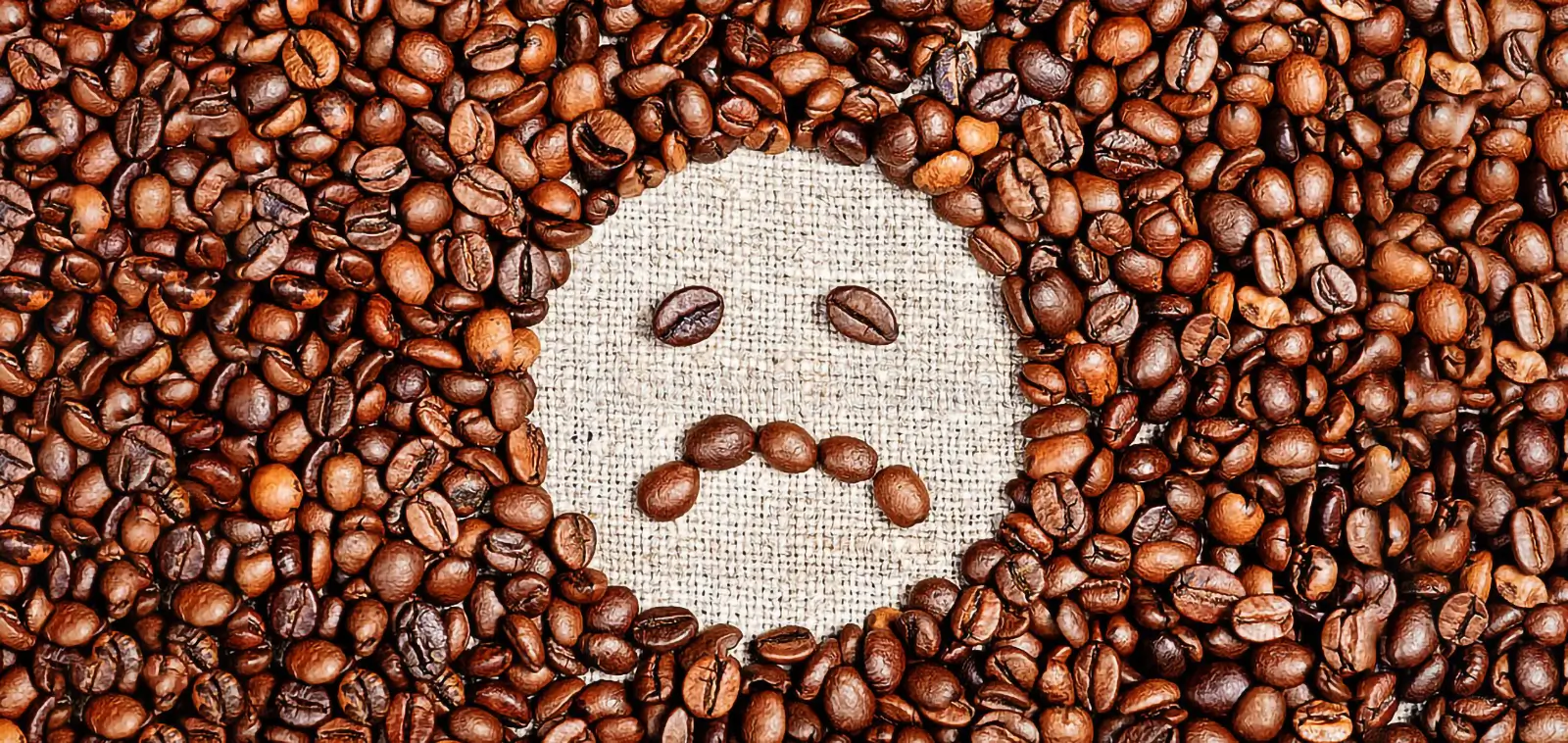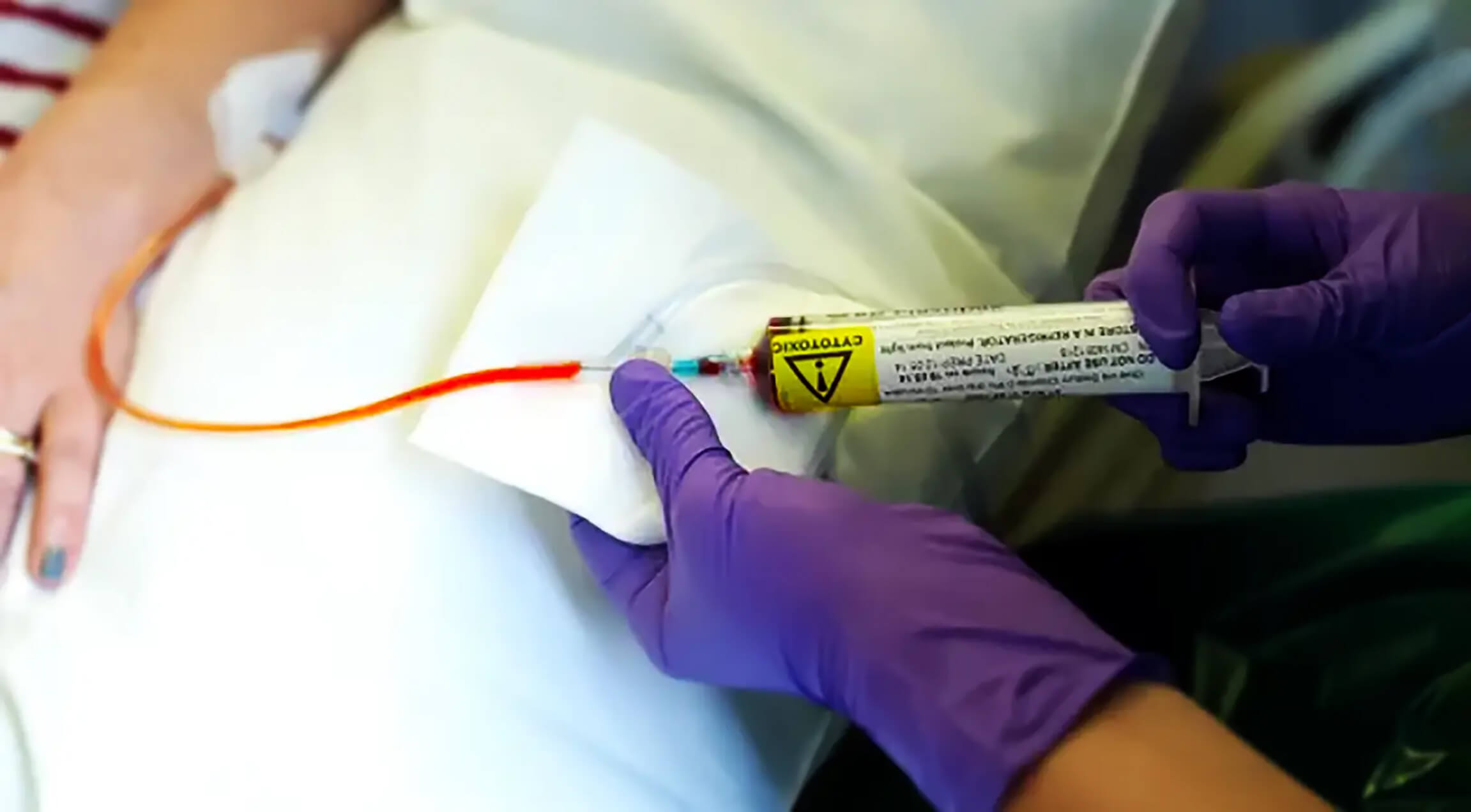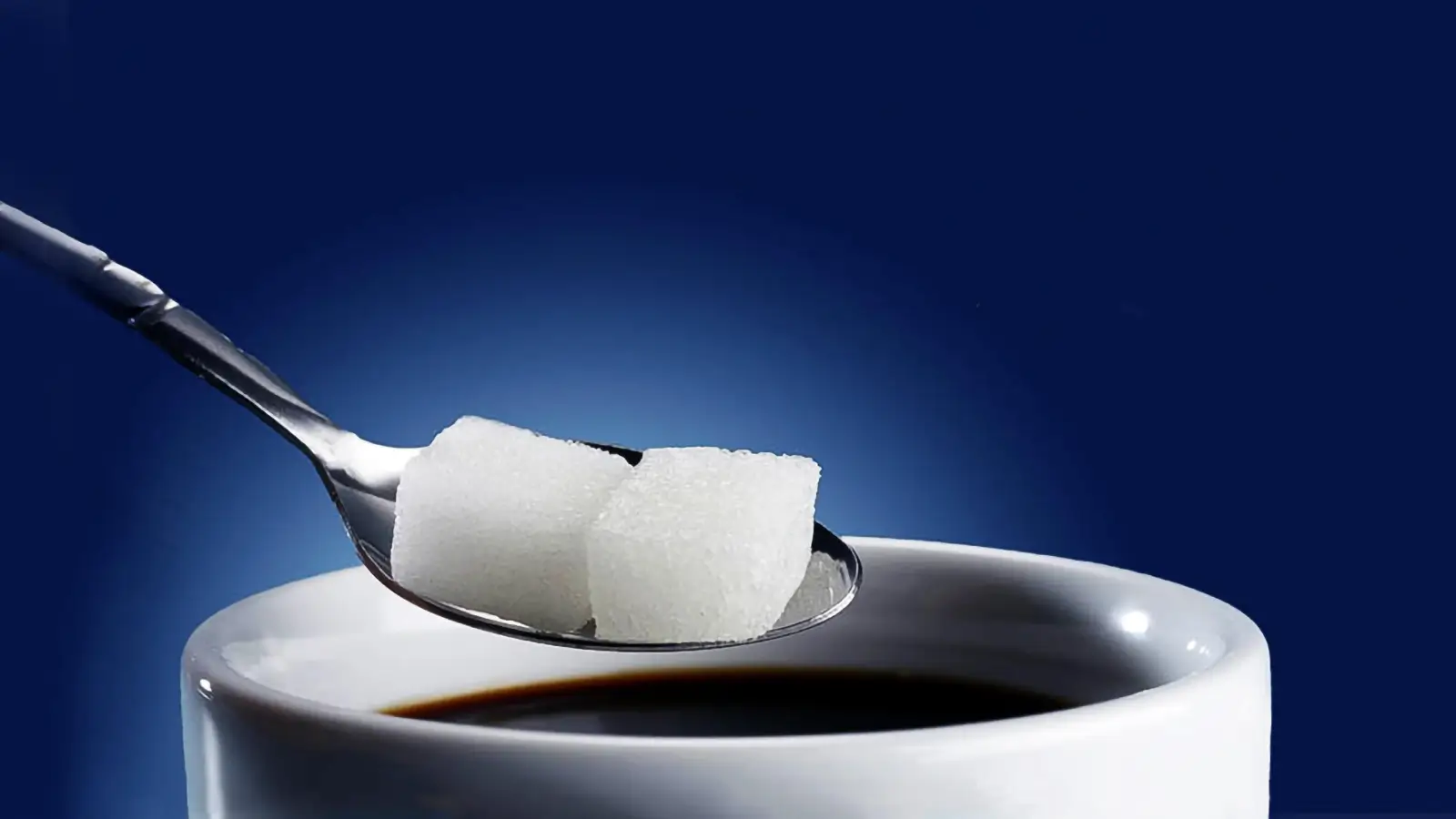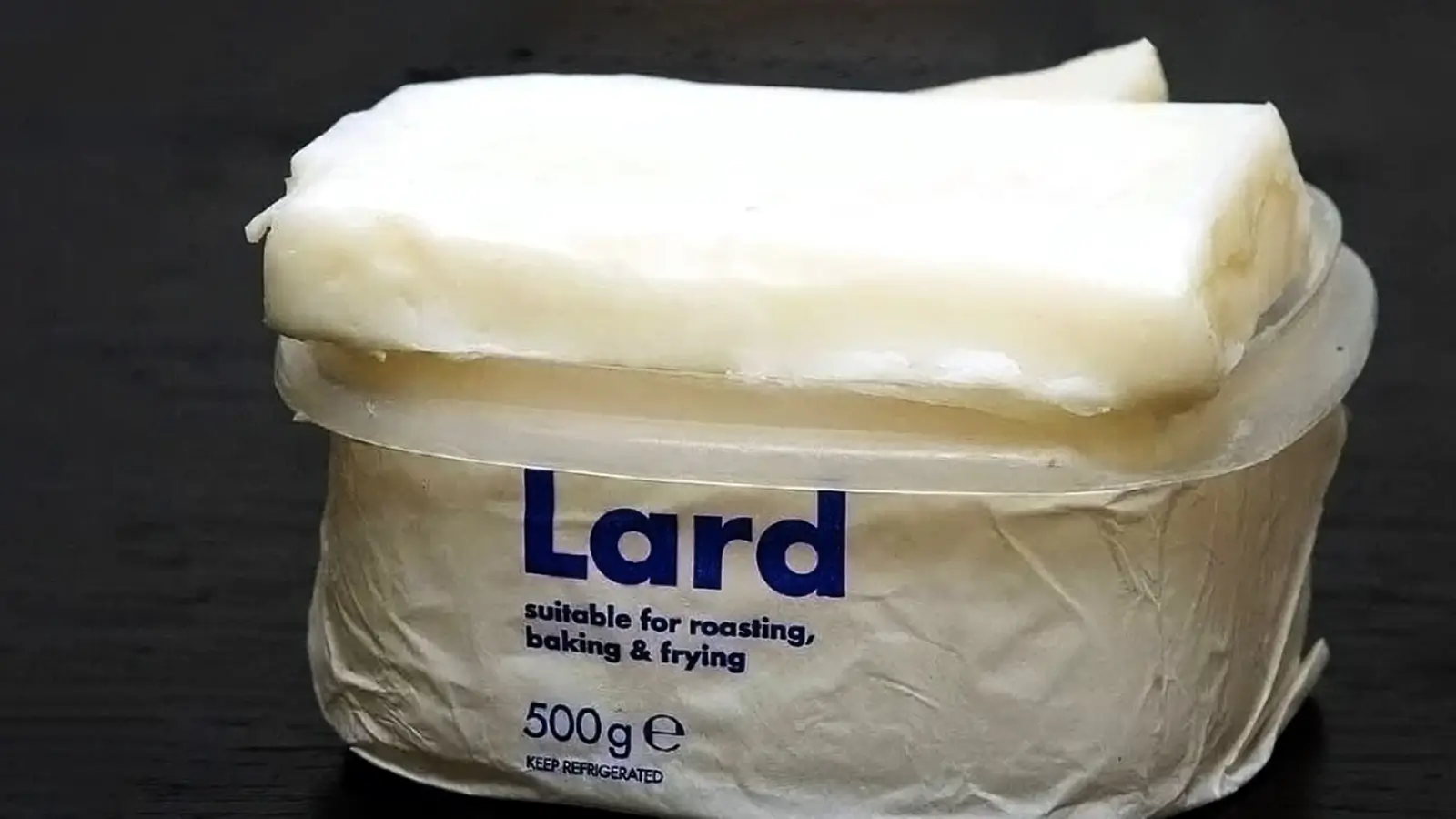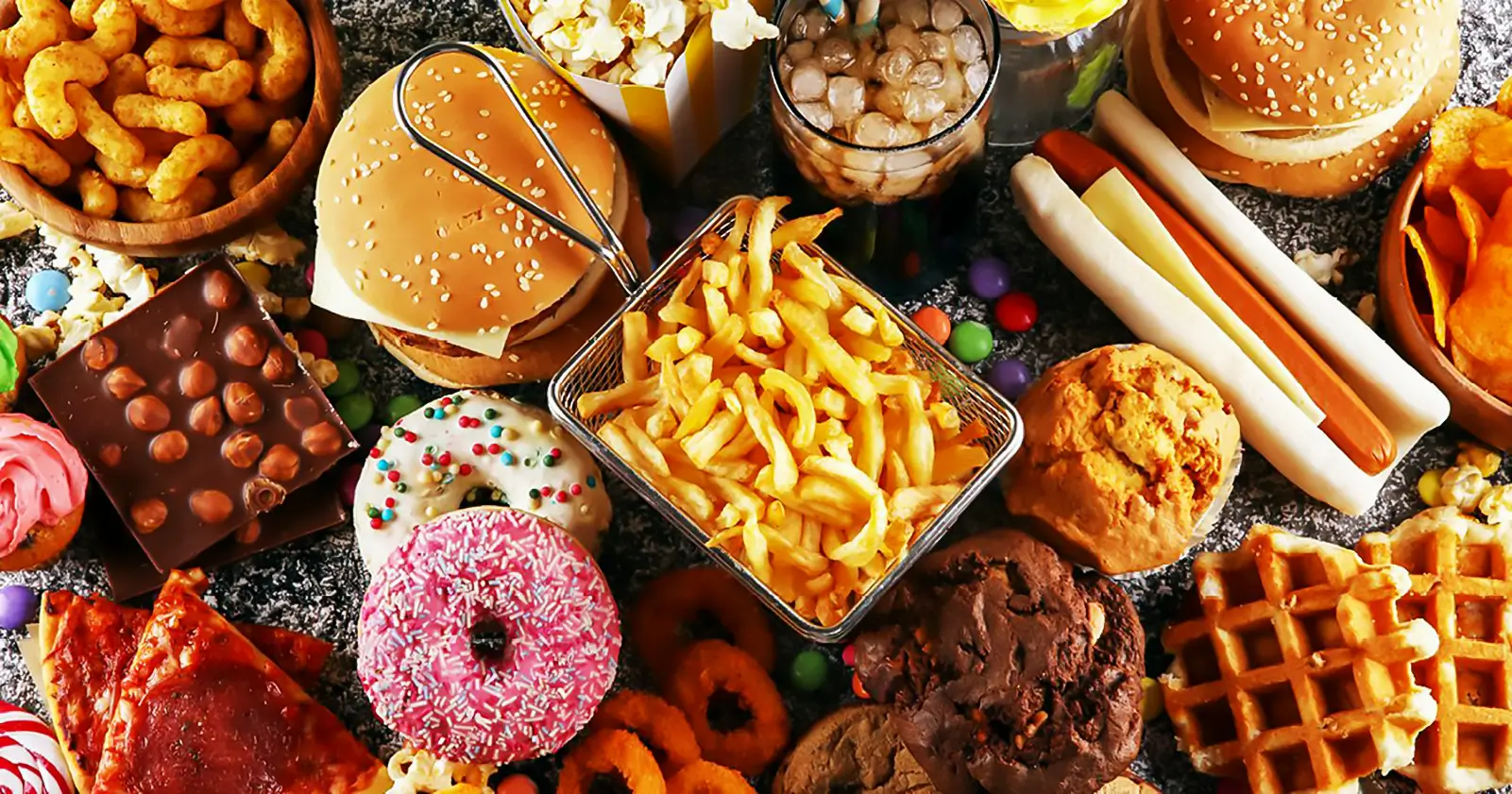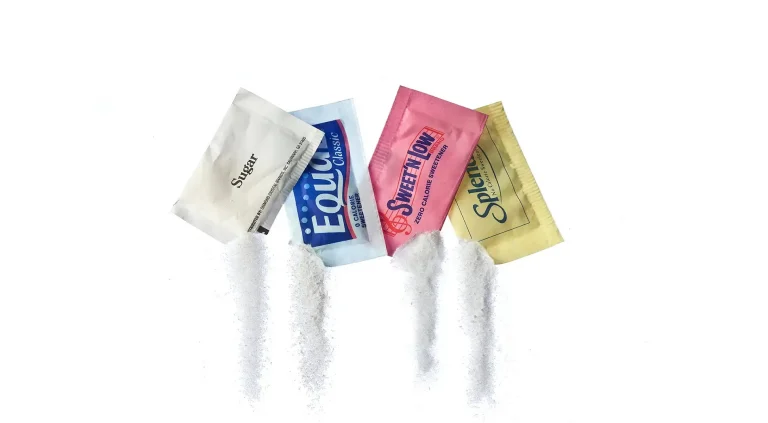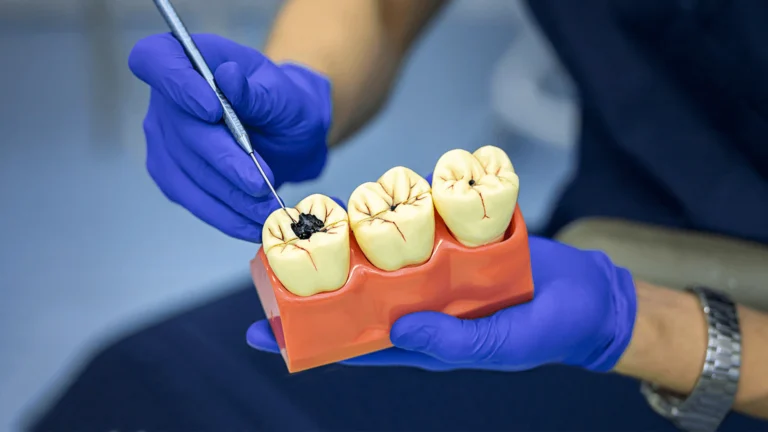Aspartamo: La Verdad Sobre Sus Riesgos Y Peligros
Una sustancia química hizo muy feliz a la industria. Se trata de una sustancia química que hace todo lo que hacen las excitotoxinas, pero que, a diferencia del glutamato monosódico, tiene un sabor dulce. Es un producto químico conocido como aspartamo (Nutra Sweet).
Milos Pokimica
Escrito por: Milos Pokimica
Revisado Médicamente Por: Dr. Xiùying Wáng, M.D.
Actualizado el 30 de septiembre de 2023Cuando la industria elimina la grasa del producto, tiene que añadir algo para que ese producto vuelva a ser sabroso. Lo que hacen si eliminan la grasa es que no hay nada en el producto, así que la solución es volver a añadir algo para aumentar el sabor, normalmente azúcar. Si el producto no es dulce, el azúcar no es una opción. Entonces lo que hacen es añadir glutamato monosódico y sal. La respuesta del cerebro a las excitotoxinas compensará la falta de azúcar. Sin embargo, entonces surge el problema.
¿Qué añadirá de nuevo si un producto necesita ser dulce?
¿Y si el producto no necesita calorías añadidas o sólo azúcar añadido, pero sigue siendo dulce? En ese caso, pueden añadir otros edulcorantes artificiales, pero no activarán el cerebro de la misma manera que el azúcar, por lo que tienen un problema. Añadir edulcorantes artificiales normales llevará a resultados insatisfactorios por varias razones que ya disfracé aquí (Edulcorantes artificiales- Conceptos básicos). Necesitan algo que realmente active la señalización de la dopamina en el cerebro como lo hace el azúcar, por lo que el sabor es sólo la mitad de la ecuación.
El problema que resolverá la excitotoxina de sabor dulce.
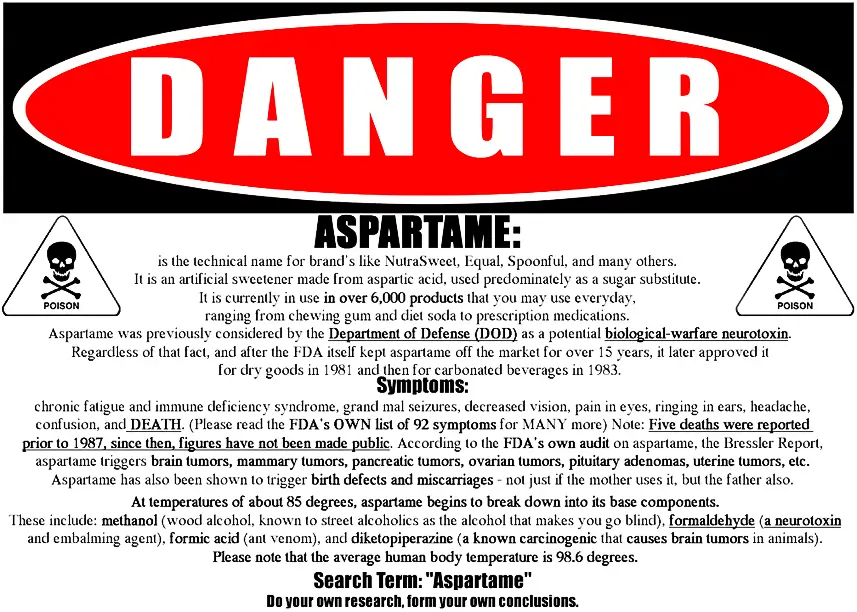
Piense en el aspartamo como un sustituto dulce del glutamato monosódico. En los casos en que necesitan eliminar tanto el azúcar como la grasa, pueden añadir excitotoxinas para conseguir el efecto deseado. Por eso la sopa MSG es sabrosa sin calorías. Por eso la Coca-Cola light es sabrosa sin calorías. Le añaden estimulantes como la cafeína y excitotoxinas como el aspartamo que tienen un sabor dulce y estimulan el cerebro al mismo tiempo, por lo que la respuesta del cerebro será como si hubieras comido algo que realmente contiene azúcar. Beber refrescos light puede crear adicción debido a este efecto de simulación.
Cuando consumimos un estimulante, nos excitamos. Al reaccionar con nuestro sistema dopaminérgico, el estimulante nos proporciona placer y euforia, lo que nos motiva a volver a consumir el mismo estimulante para experimentar una sensación repetida de recompensa (un proceso identificado como refuerzo positivo).

Otra vertiente de esto, conocida como refuerzo negativo, es la interrupción repentina de los estimulantes adictivos que puede dar lugar a antojos, que es esencialmente la sensación de querer evitar el malestar que se desarrolla una vez que el subidón artificial del estimulante ha desaparecido.

En ambos procesos, nos quedamos con ganas de más. De hecho, la memoria de la adicción a la cocaína reside en el receptor de glutamato (Mao y otros, 2013). En respuesta a la exposición a drogas, estos receptores en las neuronas muestran cambios marcados y dinámicos en su expresión. Cada vez hay más pruebas que los relacionan con la remodelación de las sinapsis excitatorias y la búsqueda persistente de drogas. El alto nivel de expresión de los receptores de glutamato mGluR7 en el circuito límbico de recompensa implica su papel en la adicción a las drogas. De hecho, hay pruebas que asocian este receptor con los efectos adictivos de los psicoestimulantes, el alcohol y los opiáceos. Se trata del mismo glutamato que el glutamato presente en el GMS.
En respuesta a la administración operante de drogas adictivas comunes, como los psicoestimulantes (cocaína y anfetamina), el alcohol y los opiáceos, los receptores mGluR límbicos del grupo III experimentan drásticas adaptaciones para contribuir a la remodelación duradera de las sinapsis excitadoras y normalmente suprimen el comportamiento de búsqueda de drogas. Como resultado, una mutación de pérdida de función (knockout) de subtipos individuales de receptores del grupo III a menudo promueve la búsqueda de drogas (Mao y otros, 2013).
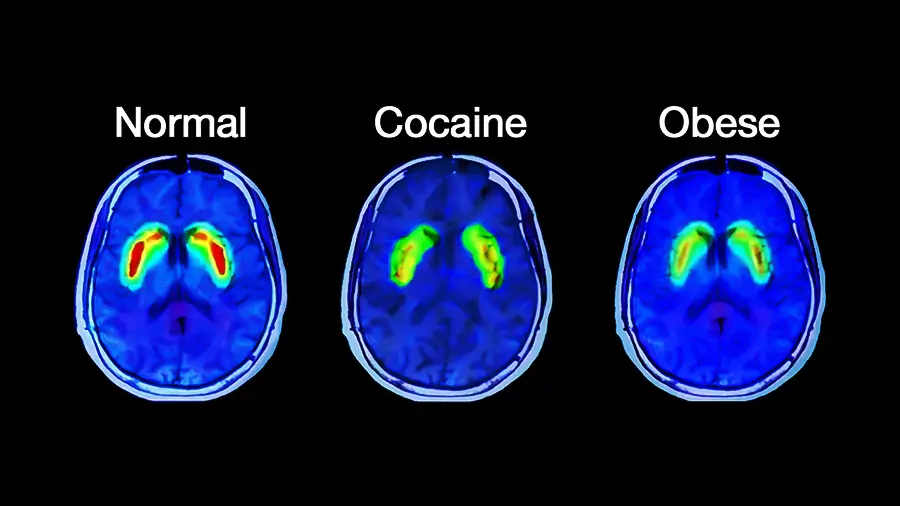
Es precisamente por eso que el aspartamo, una sustancia química con propiedades muy singulares, se utiliza a pesar de ser una de las sustancias químicas más tóxicas y neurotóxicas que existen. Es muy singular en su forma, ya que es dulce y tiene características de excitotoxicidad al mismo tiempo, por lo que, por el momento, es insustituible. Los efectos secundarios que esta sustancia química puede tener a largo plazo en nuestra salud son imposibles de correlacionar legalmente con las empresas que la utilizan. Tiene un efecto inductor de dopamina en el cerebro y, combinada con la cafeína, que tiene el mismo efecto, puede desencadenar con éxito un comportamiento adictivo, especialmente en los niños. Por eso, por ejemplo, Coca-Cola Zero la utilizó y no algo más saludable como el eritritol. Hoy en día, todas las empresas lo saben y harán lo que sea necesario para mantener el aspartamo, sabiendo muy bien que usted, o digamos la mayoría de la población, 99%, nunca lee las etiquetas y mucho menos artículos como este. Y esto incluye a las mujeres embarazadas, los niños, las personas con cáncer, etc. Incluso la historia de esta sustancia es muy reveladora para comprender lo que, en realidad, ocurre detrás del marketing y la propaganda.
En 1965, mientras trabajaba en un medicamento contra la úlcera, James Schlatter, químico de G.D. Searle (filial de Pfizer), descubrió accidentalmente el aspartamo, una sustancia 180 veces más dulce que el azúcar, pero sin calorías. Estaba recristalizando aspartamo a partir de etanol. El compuesto se derramó por el exterior del matraz y una parte se le pegó a los dedos. Se olvidó de ello, se lamió los dedos para coger un trozo de papel y notó un sabor dulce abrumador.

En 1967, Searle comienza las pruebas de seguridad del aspartamo necesarias para solicitar la aprobación de la FDA para los aditivos alimentarios. Se administró aspartamo mezclado con leche a siete monos bebés. Uno murió al cabo de 300 días. Otros cinco (de un total de siete) sufrieron convulsiones de tipo grand mal. Los resultados no se comunicaron a la FDA cuando G.D. Searle presentó sus solicitudes iniciales. ¿Por qué mezclaron el aspartamo con leche? Porque la leche ralentiza en cierta medida su digestión, con la esperanza de que no sobrecargara el cerebro en poco tiempo y causara daños. El mayor problema fue que intentaron ocultar los resultados. Un par de años más tarde, los ejecutivos de la empresa Searle crearon un memorándum interno en el que describían diferentes tácticas psicológicas que la empresa debía utilizar para que la FDA entrara en un “espíritu subconsciente de participación” con ellos en lo relativo al aspartamo y para que los reguladores de la FDA adquirieran el “hábito de decir que sí”. Para entonces, ya había más estudios no financiados por la industria.
El neurocientífico Dr. John Olney (cuya investigación pionera con el glutamato monosódico fue responsable de que se eliminara de los alimentos para bebés) realizó un par de ellos y, para entonces, ya había informado a la empresa Searle de que sus estudios demostraban que el ácido aspártico (uno de los ingredientes del aspartamo) provocaba agujeros en el cerebro de los ratones recién nacidos. Pero en 1973, tras gastar decenas de millones de dólares en pruebas de seguridad, la empresa Searle solicitó la aprobación de la FDA y presentó 11 estudios fundamentales, y realizó 113 estudios en apoyo de la seguridad del aspartamo en los años siguientes. Un año más tarde, la FDA concede al aspartamo su primera aprobación para uso restringido en alimentos secos.
Ese mismo año, dos hombres, Jim Turner y el Dr. John Olney, presentaron las primeras objeciones contra la aprobación del aspartamo. Dos años más tarde, su petición desencadenó una investigación de la FDA sobre las prácticas de laboratorio del fabricante del aspartamo, G.D. Searle. La investigación reveló que los procedimientos de prueba de Searle eran poco científicos, estaban llenos de errores y “manipulaban” los datos. Los investigadores informaron de que “nunca habían visto nada tan malo como las pruebas de Searle”. La empresa G.D. Searle, en su cruzada para obtener la aprobación, llevó a cabo una serie de estudios con animales. Cuando los presentaron a la FDA, surgieron algunas dudas sobre los estudios.
Una de las formas en que intentaron manipular los datos fue que en los estudios mostraban que no había un número significativamente mayor de tumores en el grupo de prueba que en el grupo de control. Cuando algunos de los neurocientíficos que trabajan para la FDA examinaron los datos, vieron que esto es correcto, pero luego hubo otros problemas. Ambos grupos presentaban tasas de tumores significativamente superiores a la media normal, especialmente en el caso de los tumores cerebrales. Esto puede ocurrir cuando alguien intenta manipular los datos y representar algunas de las ratas de control con tumores como parte del grupo de control. Esto reducirá la tasa de tumores en un grupo de prueba, la aumentará en el grupo de control, y al final, pueden decir que no causa ningún tumor o lo que sea, pero entonces tanto el grupo de control como el grupo de prueba tendrán tasas de tumores significativamente más altas que la media normal. media normal.
Por lo tanto, solicitaron que la Oficina de Alimentos, precursora de la FDA, realizara una investigación. El Dr. Jerome Bressler estuvo a cargo del grupo que revisó la investigación realizada por Searle. En su informe, afirmó que había interpretaciones erróneas de los datos y que se trataba de la peor investigación del mundo. El informe señala que 98 de los 196 animales murieron durante uno de los estudios de Searle y no se les practicó la autopsia hasta fechas posteriores. Se observan numerosos errores y discrepancias. Por ejemplo, se registró que una rata estaba viva, luego muerta, luego viva y luego muerta de nuevo. Descubrieron que algunos de los animales que murieron tras el aspartamo no fueron autopsiados por los científicos de Searle hasta un año después. Después de ese periodo, la carne estaba petrificada y no había forma posible de hacer una autopsia. Sin embargo, declararon que habían hecho autopsias y que los animales son normales. Extirpaban tumores y decían que los animales estaban sanos. Tenían tejido animal con tumores evidentes que se consideraba normal. No se observó atrofia testicular. Hubo un esfuerzo para encubrir los efectos negativos para obtener la aprobación. Si hicieran ciencia normal el aspartamo no seria aprobado.
La FDA solicitó formalmente a la Fiscalía General de los Estados Unidos que iniciara los procedimientos del gran jurado para revisar si se debían presentar cargos contra Searle por conclusiones deliberadamente engañosas y “ocultar hechos relevantes y realizar declaraciones falsas” en las pruebas de seguridad del aspartamo.
Era la primera vez en la historia de la FDA que solicitaban una investigación penal sobre un fabricante.
Mientras se lleva a cabo la investigación del gran jurado, Sidley & Austin, el bufete de abogados que representa a Searle, ha comenzado las negociaciones con el fiscal federal a cargo de la investigación, Samuel Skinner. Samuel Skinner dejará la fiscalía federal a finales de ese año y aceptará un puesto en el bufete de abogados de Searle, Sidley and Ostin. Al mismo tiempo, G. D. Searle contratará al destacado miembro del círculo de Washington Donald Rumsfeld como nuevo director ejecutivo. Antiguo miembro del Congreso y secretario de Defensa en la Administración Ford. Sí, ese Donald Rumsfeld. Rumsfeld fue nombrado secretario de Defensa por segunda vez en enero de 2001 por el presidente George W. Bush.

La medalla que Rumsfeld recibió en 2004 fue la Medalla Presidencial de la Libertad. La “libertad” propone el derecho a utilizar tus influyentes contactos en Washington para apoyar el uso de sustancias peligrosas para el consumo humano por parte de tu empresa y obtener una jugosa bonificación al salir por la puerta. También significa que puedes lanzar bombas sobre otros países. También significa que puedes sobornar al fiscal estadounidense encargado de la investigación.
Tras la retirada y dimisión del fiscal federal Skinner, la investigación del gran jurado sobre Searle sufrió importantes retrasos durante tanto tiempo que los cargos relacionados con el aspartamo prescribieron..
El ayudante del fiscal William Conlon, asignado a la investigación del gran jurado, dejó que el caso prescribiera. Fue contratado quince meses después por el mismo bufete Searl Sidley & Austin.
Se abandonó la investigación del gran jurado.
Dos años más tarde, en 1979, la FDA creó una Comisión Pública de Investigación para pronunciarse sobre las cuestiones de seguridad relacionadas con NutraSweet. La conclusión de la Comisión Pública de Investigación fue que el aspartamo no debía aprobarse hasta que se realizaran más investigaciones. La comisión declaró que:
“No se ha presentado ninguna prueba con un grado razonable de certeza que demuestre que el aspartamo es seguro para su uso como aditivo alimentario”.”
En 1980, la FDA prohíbe el uso del aspartamo tras realizar tres estudios científicos autónomos sobre el edulcorante.
Cuando alguien quiera decir que todo esto no es más que una conspiración, recuérdele que la FDA ya ilegalizó la sustancia a pesar de todo el lobby que había detrás. Eso dirá mucho sobre la toxicidad del aspartamo. Se concluyó que uno de los principales efectos sobre la salud era que tenía una alta probabilidad de inducir tumores cerebrales. También tenemos que tener en cuenta que en ese momento no había ningún requisito para la FDA para examinar los efectos sobre el cerebro de los aditivos alimentarios. Nunca se hicieron estudios para examinar el efecto del aspartamo en los efectos neurológicos a largo plazo o incluso a corto plazo. Los estudios sobre el cáncer se convirtieron en tumores cerebrales, pero eso son estudios sobre el cáncer, no sobre el cerebro. Los estudios sobre el cáncer fueron los principales y los únicos que investigaron. A pesar de todo esto en este estaba claro que el aspartamo no era apto para ser utilizado en los alimentos y prohibido se mantuvo en su lugar, pero no por mucho tiempo.
En 1981, Ronald Reagan juró su cargo como Presidente de Estados Unidos. Su equipo de transición incluía a Donald Rumsfeld, Consejero Delegado de G. D. Searle. Rumsfeld nombró al Dr. Arthur Hull Hayes Jr. nuevo Comisario de la FDA. Incluso antes de eso, lo primero que hizo Ronald Reagan cuando tomó posesión como presidente fue suspender la autoridad del comisario de la FDA para tomar medidas.
Lo primero que hizo Regan, no lo segundo o tercero, sino lo primero fue presionar para la aprobación de este producto químico. Obviamente existía el temor de que el comisionado iba a hacer algo sobre el aspartame antes de dejar el cargo. Eso haría las cosas más difíciles para ellos por lo que Regan suspendió la autoridad del comisionado de la FDA hasta que puedan elegir uno nuevo en un mes más o menos.
En ese mes se impidió que el antiguo comisionado de la FDA tomara ninguna medida. El nuevo comisionado de la FDA, elegido a dedo por Donald Rumsfeld, director general de G. D. Searle, no tardó en aprobar la sustancia química fabricada por G. D. Searle.
El nuevo comisionado de la FDA seleccionó una comisión científica de cinco personas para evaluar la decisión de la junta de investigación. Solo hicieron falta un par de semanas, tras conocer todos los efectos tóxicos de la sustancia, para que el panel decidiera por 3 votos a 2 a favor de apoyar la prohibición del aspartamo.
Hull resolvió entonces una táctica diferente. Nombró a un sexto miembro de la junta, lo que provocó un empate en la votación (3-3). Entonces el propio Hull decidió romper el empate y aprobar personalmente el uso del aspartamo. Más tarde, Hull abandonó la FDA bajo varias acusaciones, trabajó brevemente en el New York Medical College como tapadera, y después aceptó un puesto como consultor (1000$ al día) básicamente para no hacer nada con Burston-Marsteller. Burston-Marsteller es la principal empresa de relaciones públicas tanto de Monsanto como de GD Searle. Desde entonces desapareció y nunca ha hablado públicamente sobre el aspartamo. Siete de las personas clave que tomaron decisiones en todo este proceso que hizo que el aspartamo pasara por todo el proceso terminaron viviendo y consiguiendo un nuevo trabajo para algunas de las industrias que utilizan Nutra Sweet. En 1985, Monsanto decidió comprar la patente del aspartamo a G.D. Searle.Traducción realizada con la versión gratuita del traductor www.DeepL.com/Translator
También a partir de mediados de los años 80, la FDA disuadió e incluso impidió que el Programa Nacional de Toxicología realizara investigaciones a largo plazo sobre el cáncer provocado por el aspartamo. Lo que quedó fueron cientos de estudios financiados por la industria que no demostraron nada, una tasa de seguridad de 100%, y más de 90 estudios independientes, de los cuales más de 90% mostraron un aumento del riesgo de cáncer y muchos otros efectos adversos. Se han llevado a cabo estudios científicos con conclusiones que van desde “seguro en todas las condiciones” hasta “inseguro en cualquier dosis”.”
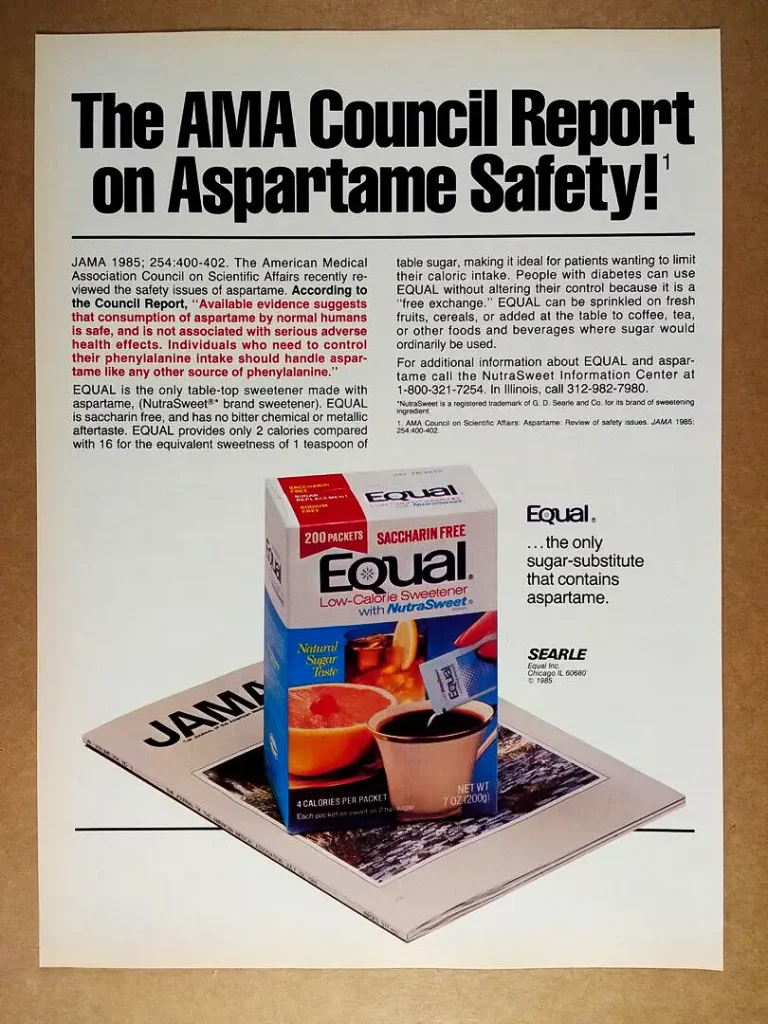
Existe un aumento bien documentado de las tasas de incidencia de tumores cerebrales en el año 1985, que se han mantenido elevadas hasta la actualidad. El Instituto Nacional del Cáncer registró un la tasa de cáncer cerebral primario desde 1985. En aquel momento, esta tendencia se atribuyó exclusivamente a procedimientos de exploración y diagnóstico más innovadores. El problema es que los dispositivos de exploración cerebral adecuados estuvieron ampliamente disponibles durante al menos diez años antes de 1985. Además, los incidentes de otras formas de cáncer fuera del cerebro se mantuvieron igual y en algunos casos disminuyeron. El aspartamo se comercializó totalmente en 1983. Ya en 1984, se produjo un aumento del 10% en la tasa de cáncer cerebral en EE.UU. y la incidencia de linfoma cerebral, un tipo de tumor cerebral agresivo, se disparó un 60%.
En el intestino, el aspartamo se descompone para liberar metanol y dos aminoácidos: fenilalanina y aspartato. Aproximadamente el 50% es ácido aspártico, el 40% fenilalanina y el 10% alcohol de madera o metanol.
El metanol se metaboliza en formaldehído.
Quizá conozca el formaldehído como líquido para embalsamar. El cuerpo no puede deshacerse del formaldehído. El cuerpo almacena cualquier cantidad. La industria ha hecho una gran cosa acerca de cómo hay un grupo metilo que se encuentra en todas las frutas y verduras. Cualquier cosa que comamos tiene grupos metilo, por lo que ingerir metanol en el aspartamo no es un gran problema y las concentraciones de formaldehído, en comparación, son minúsculas. La cantidad de formaldehído que ingerimos de la fruta es mucho mayor que la que podríamos obtener del aspartamo. Oirás esto con cualquier médico o investigación que esté diseñada para defender el uso del aspartamo. Pero de nuevo no dicen toda la verdad.
Cuando el cuerpo metaboliza el aspartamo, se obtiene una pequeña cantidad de formaldehído, pero en forma libre.
Cuando se come fruta, se ingiere más metanol, pero ese metanol está unido a la pectina. Los humanos carecemos de la enzima que descompone la pectina. Somos incapaces de separar el metanol de la pectina. Pasa por el cuerpo sin causar ningún daño. Aunque haya más metanol en frutas y verduras, en realidad ese metanol es irrelevante. En el aspartamo, el metanol libre y luego el formaldehído libre, incluso en cantidades mínimas, son peligrosos debido a su efecto tóxico acumulativo. Además de metanol, en la naturaleza, estamos comiendo la misma cantidad de etanol en frutas o verduras. Hay metanol y etanol en las frutas, y se contrarrestan mutuamente.
Cuando G. D. Searle hizo un experimento con monos, el aspartamo provocó a esos monos convulsiones de gran mal. Monkeys have a higher reaction to ethanol than humans. Regular alcohol like wine. On the other hand, they have really high resistance to methanol. Much higher than humans. Incluso con alta resistencia, y a pesar de que fueron alimentados con aspartamo con leche, todavía tenían convulsiones, y uno murió de un paro cardíaco causado por la sobreestimulación del sistema nervioso.
Además del metanol, el ácido aspártico es una excitotoxina y se ha demostrado que la fenilalanina atraviesa la barrera hematoencefálica y es un precursor de la norepinefrina (adrenalina en el cerebro).
La fenilalanina se encuentra de forma natural en el cerebro. No es tan mala, pero si tenemos un nivel anormalmente alto, puede ser muy perjudicial. Existe un trastorno médico que afecta a 1 de cada 10 000 personas conocido como PKU (fenilcetonuria). Se trata de un exceso de fenilalanina en el cerebro debido a la incapacidad del organismo para procesarla. Si se añade fenilalanina a alguien que no padece PKU, se puede desencadenar una reacción muy grave. El exceso de fenilalanina está relacionado con una reducción de la producción de serotonina. La fenilalanina puede desencadenar, por ejemplo, ataques maníacos en personas que padecen depresión maníaca.
Se sabe desde hace mucho tiempo, y también hay estudios que cuando se toma aspartamo con hidratos de carbono, disminuye la disponibilidad de l-triptófano en el cerebro, que es un componente básico de la serotonina. También puede desencadenar un agotamiento regular en individuos susceptibles. En un estudio (Walton y otros, 1993) tuvieron incluso que detener el experimento. Aunque el protocolo requería el reclutamiento de 40 pacientes con depresión unipolar y 40 sin antecedentes psiquiátricos, el proyecto fue detenido por la Junta de Revisión Institucional después de que un total de 13 individuos hubieran completado el estudio debido a la gravedad de las reacciones en un grupo de sujetos con antecedentes de depresión. Se concluyó que no era ético continuar con el estudio. En este caso también la empresa Nutra Sweet se negó a proporcionar el producto para las pruebas e incluso se negó a vendérselo. Los investigadores tuvieron que encontrarlo en terceros proveedores.
En uno de los nuevos estudios sobre el efecto del aspartamo en los trastornos del estado de ánimo realizado ya en 2014 (Lindseth et al., 2014) tomaron a personas sanas normales y las sometieron a una dieta alta en aspartamo. Se examinó a adultos sanos que consumieron una dieta con alto contenido de aspartamo (25 mg/kg de peso corporal/día) preparada para el estudio durante 8 días y una dieta con bajo contenido de aspartamo (10 mg/kg de peso corporal/día) durante 8 días, con un período de lavado de 2 semanas entre las dietas, para comprobar las diferencias entre sujetos en cuanto a cognición, depresión, estado de ánimo y dolor de cabeza. Cuando consumían dietas altas en aspartamo, los participantes tenían un estado de ánimo más irritable, mostraban más depresión y obtenían peores resultados en las pruebas de orientación espacial. Todos ellos eran personas sanas sin antecedentes de enfermedad mental.
Ahora bien, ¿cuánto es en realidad una dosis de 25 mg/kg de peso corporal/día? Pues bien, la FDA sitúa el límite superior de seguridad en 50 mg/kg de peso corporal/día. El alto nivel de consumo examinado aquí estaba muy por debajo del nivel máximo de consumo diario aceptable de 40-50 mg. Y esto sólo durante ocho días.

Su consumo prolongado puede tener efectos aún más graves. Especialmente en niños y mujeres embarazadas. El problema es que hoy en día el aspartamo y otras excitotoxinas se añaden en todas partes. No hay ninguna posibilidad real de que alguien que coma cualquier cosa hecha por el industria alimentaria podría evitar comerlos. Y estas sustancias químicas son sólo la punta del iceberg.
Referencias:
- Rycerz, K., & Jaworska-Adamu, J. E. (2013). Efectos de los metabolitos del aspartamo en astrocitos y neuronas. Folia neuropathologica, 51(1), 10-17. https://doi.org/10.5114/fn.2013.34191
- Humphries, P., Pretorius, E., & Naudé, H. (2008). Efectos celulares directos e indirectos del aspartamo en el cerebro. Revista europea de nutrición clínica, 62(4), 451-462. https://doi.org/10.1038/sj.ejcn.1602866
- Ashok, I., Sheeladevi, R., & Wankhar, D. (2015). Efecto agudo del estrés oxidativo inducido por el aspartamo en el cerebro de la rata albina Wistar. Revista de investigación biomédica, 29(5), 390-396. https://doi.org/10.7555/JBR.28.20120118
- Onaolapo, A. Y., Abdusalam, S. Z., & Onaolapo, O. J. (2017). Silymarin attenuates aspartame-induced variation in mouse behaviour, cerebrocortical morphology and oxidative stress markers. Fisiopatología : la revista oficial de la Sociedad Internacional de Fisiopatología, 24(2), 51-62. https://doi.org/10.1016/j.pathophys.2017.01.002
- Choudhary A. K. (2018). Aspartame: Should Individuals with Type II Diabetes be Taking it?" (¿Deberían tomarlo las personas con diabetes tipo II?). Revisiones actuales de la diabetes, 14(4), 350-362. https://doi.org/10.2174/1573399813666170601093336
- Choudhary, A. K., & Lee, Y. Y. (2018). Síntomas neurofisiológicos y aspartamo: ¿Cuál es la conexión? Neurociencia nutricional, 21(5), 306-316. https://doi.org/10.1080/1028415X.2017.1288340
- González-Quevedo, A., Obregón, F., Urbina, M., Roussó, T., & Lima, L. (2002). Efecto de la administración crónica de metanol sobre aminoácidos y monoaminas en retina, nervio óptico y cerebro de la rata. Toxicología y farmacología aplicada, 185(2), 77-84. https://doi.org/10.1006/taap.2002.9477
- Lindseth, G. N., Coolahan, S. E., Petros, T. V., & Lindseth, P. D. (2014). Efectos neuroconductuales del consumo de aspartamo. Investigación en enfermería y salud, 37(3), 185-193. https://doi.org/10.1002/nur.21595
- Guo, X., Park, Y., Freedman, N. D., Sinha, R., Hollenbeck, A. R., Blair, A., & Chen, H. (2014). Las bebidas azucaradas, el café y el té y el riesgo de depresión entre los adultos mayores estadounidenses. PloS one, 9(4), e94715. https://doi.org/10.1371/journal.pone.0094715
- Onaolapo, A. Y., Onaolapo, O. J., & Nwoha, P. U. (2016). Alterations in behaviour, cerebral cortical morphology and cerebral oxidative stress markers following aspartame ingestion. Revista de neuroanatomía química, 78, 42-56. https://doi.org/10.1016/j.jchemneu.2016.08.006
- Olney, J. W., Farber, N. B., Spitznagel, E., & Robins, L. N. (1996). Aumento de las tasas de tumores cerebrales: ¿existe una relación con el aspartamo? Revista de neuropatología y neurología experimental, 55(11), 1115-1123. https://doi.org/10.1097/00005072-199611000-00002
- Huff, J., y LaDou, J. (2007). Aspartame bioassay findings prestend human cancer hazards. Revista internacional de salud laboral y medioambiental, 13(4), 446-448. https://doi.org/10.1179/oeh.2007.13.4.446
- Hall, L. N., Sanchez, L. R., Hubbard, J., Lee, H., Looby, S. E., Srinivasa, S., Zanni, M. V., Stanley, T. L., Lo, J., Grinspoon, S. K., & Fitch, K. V. (2017). Aspartame Intake Relates to Coronary Plaque Burden and Inflammatory Indices in Human Immunodeficiency Virus. Foro abierto sobre enfermedades infecciosas, 4(2), ofx083. https://doi.org/10.1093/ofid/ofx083
- Palmer, J. R., Boggs, D. A., Krishnan, S., Hu, F. B., Singer, M., & Rosenberg, L. (2008). Sugar-sweetened beverages and incidence of type 2 diabetes mellitus in African American women. Archivos de medicina interna, 168(14), 1487-1492. https://doi.org/10.1001/archinte.168.14.1487
- Malik, V. S., Popkin, B. M., Bray, G. A., Després, J. P., Willett, W. C., & Hu, F. B. (2010). Sugar-sweetened beverages and risk of metabolic syndrome and type 2 diabetes: a meta-analysis. Atención a la diabetes, 33(11), 2477-2483. https://doi.org/10.2337/dc10-1079
- Finamor, I., Pérez, S., Bressan, C. A., Brenner, C. E., Rius-Pérez, S., Brittes, P. C., Cheiran, G., Rocha, M. I., da Veiga, M., Sastre, J., & Pavanato, M. A. (2017). Chronic aspartame intake causes changes in the trans-sulphuration pathway, glutathione depletion and liver damage in mice. Biología redox, 11, 701-707. https://doi.org/10.1016/j.redox.2017.01.019
- Soffritti, M., Belpoggi, F., Manservigi, M., Tibaldi, E., Lauriola, M., Falcioni, L., & Bua, L. (2010). Aspartame administered in feed, beginning prenatally through life span, induces cancers of the liver and lung in male Swiss mice. Revista americana de medicina industrial, 53(12), 1197-1206. https://doi.org/10.1002/ajim.20896
- Nettleton, J. E., Reimer, R. A., & Shearer, J. (2016). Remodelación de la microbiota intestinal: ¿Impacto de los edulcorantes bajos en calorías y relación con la resistencia a la insulina? Fisiología y comportamiento, 164(Parte B), 488-493. https://doi.org/10.1016/j.physbeh.2016.04.029
- Palmnäs, M. S., Cowan, T. E., Bomhof, M. R., Su, J., Reimer, R. A., Vogel, H. J., Hittel, D. S., & Shearer, J. (2014). El consumo de dosis bajas de aspartamo afecta de forma diferencial a las interacciones metabólicas microbiota-huésped del intestino en la rata obesa inducida por dieta. PloS one, 9(10), e109841. https://doi.org/10.1371/journal.pone.0109841
- Suez, J., Korem, T., Zeevi, D., Zilberman-Schapira, G., Thaiss, C. A., Maza, O., Israeli, D., Zmora, N., Gilad, S., Weinberger, A., Kuperman, Y., Harmelin, A., Kolodkin-Gal, I., Shapiro, H., Halpern, Z., Segal, E., & Elinav, E. (2014). Los edulcorantes artificiales inducen intolerancia a la glucosa mediante la alteración de la microbiota intestinal. Naturaleza, 514(7521), 181-186. https://doi.org/10.1038/nature13793
- Bandyopadhyay, A., Ghoshal, S., & Mukherjee, A. (2008). Genotoxicity testing of low-calorie sweeteners: aspartame, acesulfame-K, and saccharin. Toxicología química y de medicamentos, 31(4), 447-457. https://doi.org/10.1080/01480540802390270
- van Eyk A. D. (2015). El efecto de cinco edulcorantes artificiales en células Caco-2, HT-29 y HEK-293. Toxicología química y de medicamentos, 38(3), 318-327. https://doi.org/10.3109/01480545.2014.966381
- Brown, R. J., de Banate, M. A., & Rother, K. I. (2010). Edulcorantes artificiales: una revisión sistemática de los efectos metabólicos en los jóvenes. Revista internacional de obesidad pediátrica : IJPO : revista oficial de la Asociación Internacional para el Estudio de la Obesidad, 5(4), 305-312. https://doi.org/10.3109/17477160903497027
- Bhupathiraju, S. N., Pan, A., Malik, V. S., Manson, J. E., Willett, W. C., van Dam, R. M., & Hu, F. B. (2013). Bebidas con cafeína y sin cafeína y riesgo de diabetes tipo 2. El diario Americano de la nutrición clínica, 97(1), 155-166. https://doi.org/10.3945/ajcn.112.048603
- de Koning, L., Malik, V. S., Rimm, E. B., Willett, W. C., & Hu, F. B. (2011). El consumo de bebidas azucaradas y endulzadas artificialmente y el riesgo de diabetes tipo 2 en los hombres. El diario Americano de la nutrición clínica, 93(6), 1321-1327. https://doi.org/10.3945/ajcn.110.007922
- Azad, M. B., Abou-Setta, A. M., Chauhan, B. F., Rabbani, R., Lys, J., Copstein, L., Mann, A., Jeyaraman, M. M., Reid, A. E., Fiander, M., MacKay, D. S., McGavock, J., Wicklow, B., & Zarychanski, R. (2017). Edulcorantes no nutritivos y salud cardiometabólica: una revisión sistemática y metaanálisis de ensayos controlados aleatorios y estudios de cohortes prospectivos. CMAJ: Revista de la Asociación Médica Canadiense = Journal de l'Association médicale canadienne, 189(28), E929-E939. https://doi.org/10.1503/cmaj.161390
- Ferreira-Pêgo, C., Babio, N., Bes-Rastrollo, M., Corella, D., Estruch, R., Ros, E., Fitó, M., Serra-Majem, L., Arós, F., Fiol, M., Santos-Lozano, J. M., Muñoz-Bravo, C., Pintó, X., Ruiz-Canela, M., Salas-Salvadó, J., & PREDIMED Investigators (2016). El consumo frecuente de bebidas azucaradas y edulcoradas artificialmente y de zumos de frutas naturales y embotellados se asocia con un mayor riesgo de síndrome metabólico en una población mediterránea con alto riesgo de enfermedad cardiovascular. El Diario de la nutrición, 146(8), 1528-1536. https://doi.org/10.3945/jn.116.230367
- Pepino M. Y. (2015). Efectos metabólicos de los edulcorantes no nutritivos. Fisiología y comportamiento, 152(Parte B), 450-455. https://doi.org/10.1016/j.physbeh.2015.06.024
- Daly, K., Darby, A. C., & Shirazi-Beechey, S. P. (2016). Edulcorantes bajos en calorías y microbiota intestinal. Fisiología y comportamiento, 164(Parte B), 494-500. https://doi.org/10.1016/j.physbeh.2016.03.014
- Mosmann T. (1983). Rapid colorimetric assay for cellular growth and survival: application to proliferation and cytotoxicity assays. Revista de métodos inmunológicos, 65(1-2), 55-63. https://doi.org/10.1016/0022-1759(83)90303-4
- Mao, L., Guo, M., Jin, D., Xue, B., & Wang, J. Q. (2013). Grupo III metabotrópicos receptores de glutamato y la adicción a las drogas. Fronteras de la medicina, 7(4), 445-451. https://doi.org/10.1007/s11684-013-0291-1
- Walton, R. G., Hudak, R., & Green-Waite, R. J. (1993). Adverse reactions to aspartame: double-blind challenge in patients from a vulnerable population. Psiquiatría biológica, 34(1-2), 13-17. https://doi.org/10.1016/0006-3223(93)90251-8
- Lindseth, G. N., Coolahan, S. E., Petros, T. V., & Lindseth, P. D. (2014). Efectos neuroconductuales del consumo de aspartamo. Investigación en enfermería y salud, 37(3), 185-193. https://doi.org/10.1002/nur.21595
Contenidos Relacionados
¿Tienes alguna duda acerca de la nutrición y la salud?
Me encantaría saber de usted y responderlas en mi próxima publicación. Agradezco sus aportes y opiniones y espero tener noticias suyas pronto. También te invito a síguenos en Facebook, Instagram y Pinterest para más contenidos sobre dieta, nutrición y salud. Puedes dejar un comentario allí y conectar con otros entusiastas de la salud, compartir tus consejos y experiencias, y recibir apoyo y ánimo de nuestro equipo y nuestra comunidad.
Espero que este post le haya resultado informativo y ameno y que esté preparado para aplicar los conocimientos adquiridos. Si le ha resultado útil, por favor compártelo con tus amigos y familiares que también podrían beneficiarse de ella. Nunca se sabe quién puede necesitar orientación y apoyo en su camino hacia la salud.
– También Te Puede Interesar –

Aprenda Sobre Nutricion
Milos Pokimica es doctor en medicina natural, nutricionista clínico, escritor sobre salud médica y nutrición y asesor en ciencias de la nutrición. Autor de la serie de libros Go Vegan? Revisión de la Ciencia, también dirige el sitio web sobre salud natural GoVeganWay.com.
Descargo De Responsabilidad Médica
GoVeganWay.com le ofrece reseñas de las últimas investigaciones relacionadas con la nutrición y la salud. La información proporcionada representa la opinión personal del autor y no pretende ni implica sustituir el asesoramiento, diagnóstico o tratamiento médico profesional. La información proporcionada tiene fines informativos únicamente y no pretende sustituir la consulta, el diagnóstico y/o el tratamiento médico de un médico o proveedor de atención médica calificado.NUNCA ignore el CONSEJO MÉDICO PROFESIONAL O RETRASAR la BÚSQUEDA de TRATAMIENTO MÉDICO a CAUSA DE ALGO QUE HAYA LEÍDO EN O accesibles a TRAVÉS de GoVeganWay.com
NUNCA APLICAR CUALQUIER cambio de ESTILO de vida O CAMBIOS EN su totalidad COMO UNA CONSECUENCIA DE ALGO QUE HA LEÍDO EN GoVeganWay.com ANTES de CONSULTAR con LICENCIA PROFESIONAL MÉDICO.
En el caso de una emergencia médica, llame a un médico o al 911 inmediatamente. GoVeganWay.com no se recomienda ni aprueba ninguna de los grupos, las organizaciones, las pruebas, los médicos, productos, procedimientos, opiniones u otra información que pueda ser mencionado en el interior.
Selecciones del editor –
Milos Pokimica es escritor especializado en salud y nutrición y asesor en ciencias nutricionales. Autor de la serie de libros Go Vegan? Revisión de la Ciencia, también dirige el sitio web sobre salud natural GoVeganWay.com.
Últimos artículos -
Top Noticias De Salud — ScienceDaily
- Type 2 diabetes physically changes the human heart, study findsen enero 4, 2026
Type 2 diabetes doesn’t just raise the risk of heart disease—it physically reshapes the heart itself. Researchers studying donated human hearts found that diabetes disrupts how heart cells produce energy, weakens the muscle’s structure, and triggers a buildup of stiff, fibrous tissue that makes it harder for the heart to pump. These changes are especially severe in people with ischemic heart disease, the most common cause of heart failure.
- Scientists found a way to help aging guts heal themselvesen enero 4, 2026
Researchers have discovered a way to help aging intestines heal themselves using CAR T-cell therapy. By targeting senescent cells that build up over time, the treatment boosted gut regeneration, reduced inflammation, and improved nutrient absorption in mice. It even helped protect the intestine from radiation damage, with benefits lasting up to a year. Early results in human intestinal cells suggest the approach could one day improve gut health in older adults and cancer patients.
- A weak body clock may be an early warning for dementiaen enero 4, 2026
Your daily rhythm may matter more for brain health than previously thought. Older adults with weaker, more disrupted activity patterns were far more likely to develop dementia than those with steady routines. A later daily energy peak was also linked to higher risk. The study points to the body clock as a possible early warning sign for cognitive decline.
- The hidden timing system that shapes how you thinken enero 3, 2026
The brain constantly blends split-second reactions with slower, more thoughtful processing, and new research shows how it pulls this off. Scientists discovered that brain regions operate on different internal clocks and rely on white matter connections to share information across these timescales. The way this timing is organized affects how efficiently the brain switches between activity patterns tied to behavior. Differences in this system may help explain why people vary in cognitive ability.
- Scientists tested intermittent fasting without eating less and found no metabolic benefiten enero 3, 2026
Time-restricted eating has been widely promoted as a simple way to boost metabolic health, but new research paints a more complicated picture. When calorie intake stayed the same, an eight-hour eating window did not improve insulin sensitivity or cardiovascular markers. What did change was the body’s internal clock, which shifted based on meal timing and altered sleep patterns. The results suggest calorie reduction, not the eating window itself, may be the real driver of health benefits.
- Age does not stop nerve healing after spinal cord injuryen enero 3, 2026
As spinal cord injuries increasingly affect older adults, new research reveals a surprising pattern in recovery. The study shows that aging does not appear to slow the healing of nerves themselves, with older patients regaining strength and sensation at rates similar to younger people. However, age makes a clear difference in how well people recover everyday abilities like walking, mobility, and self-care.
- New antibiotic pill shows promise against drug-resistant gonorrheaen enero 3, 2026
A one-dose oral drug called zoliflodacin has proven highly effective against gonorrhoea in a major international trial. The pill matched the success of current treatments while avoiding injections and complex dosing. As antibiotic resistance spreads, this new option could make treatment simpler and more accessible worldwide. Approval could mark a major step forward in controlling a stubborn global STI.
PubMed, #Dieta vegana –
- Vegetarian Dietary Patterns for Adults: A Position Paper of the Academy of Nutrition and Dieteticsen diciembre 31, 2025
It is the position of the Academy of Nutrition and Dietetics that, in adults, appropriately planned vegetarian and vegan dietary patterns can be nutritionally adequate and can offer long-term health benefits such as improving several health outcomes associated with cardiometabolic diseases. Vegetarian dietary patterns exclude meat, poultry, and seafood, and vegan dietary patterns exclude all foods of animal origin. Registered dietitian nutritionists (RDNs) and nutrition and dietetics…
- Impact of alpha-linolenic acid supplementation on long-chain n-3 fatty acid profiles in Western, flexitarian, vegetarian, and vegan dietsen diciembre 31, 2025
CONCLUSION: In conclusion, flaxseed oil supplementation combined with a controlled diet effectively improves n-3 LCPUFA status irrespective of habitual diet. The extent of relative improvement was primarily determined by baseline EPA concentrations.
- Academy of Nutrition and Dietetics’ Vegetarian Position Paper Mistakenly Links Vegetarian and Vegan Diets with Vitamin D Deficiencyen diciembre 31, 2025
No abstract
- The effect of a vegan diet with or without resistance exercise on thigh muscle volume in older adults. Research protocol of the Vold-study: a 12-week randomized controlled trialen diciembre 26, 2025
BACKGROUND: Plant-based diets are increasingly adopted. Plant-based foods exhibit a lower protein quantity and quality compared to animal-based foods. As such, a fully plant-based, i.e. vegan, diet may be suboptimal for the maintenance of skeletal muscle mass later in life. The primary objectives of this study protocol are therefore: (1) To assess the effect of a 12-week self-composed vegan diet in comparison to an omnivorous diet on thigh muscle volume in community-dwelling older adults; and…
- Comparing diet-related attitudes, perceptions, and behaviors of vegan and omnivorous adults: results from a cross-sectional survey study in Germanyen diciembre 22, 2025
CONCLUSION: The findings are consistent with and build on existing research on cognitive and behavioral patterns related to a vegan diet, while at the same time yielding some additional insights. In particular, the results on significant differences in the risk-benefit perception of a vegan diet, as well as on motivations and influences regarding the decision to follow a vegan diet provide an important basis for the development of public health interventions and a foundation for further […]
Publicaciones aleatorias –
Publicaciones destacadas -
La última versión desde PubMed, #Dieta basada en plantas –
- Adjunctive nutritional intervention improves glycaemia and quality of life in dapagliflozin-treated diabetic patientspor Yifan Liu en enero 3, 2026
CONCLUSION: Adjunctive nutritional intervention significantly enhances the glycaemic, renal, nutritional and quality-of-life benefits of dapagliflozin in patients with DN, offering a promising integrated therapeutic strategy.
- Effects of incrementally increased plant-based protein intake on gut microbiota and inflammatory-metabolic biomarkers in healthy adultspor Samira Prado en enero 2, 2026
Shifting to a plant-based diet naturally alters protein source choices. In many countries, protein from yellow pea is widely used as a main ingredient in meat alternatives. Still, its biological effects, especially regarding gastrointestinal health, remain incompletely understood. The aim of our study was to investigate how a weekly increase in the intake of a well-characterized pea protein isolate affects surrogate markers of health, fecal short-chain fatty acids and gut microbiota […]
- Uric acid levels mediate the association between four dietary indices and kidney stones in US adults: A cross-sectional study of NHANES 2007-2018por Jinlong Cao en enero 2, 2026
CONCLUSION: Healthy dietary patterns are associated with a reduced risk of kidney stones, partially mediated by uric acid levels.
- Nutritional Assessment of Pesticide-associated Metabolic Stress in Plant-based Dietspor Ramona Alina Tomuța en enero 2, 2026
CONCLUSION: These findings suggest that chronic dietary pesticide exposure – even at regulatory-compliant levels – may produce a consistent metabolomic signature, particularly when at least five different pesticide, herbicide, or fungicide residues are simultaneously detected, highlighting the potential for cumulative biological effects characterized by oxidative stress, detoxification pathway strain, gut microbiome disruption, and mitochondrial impairment. This underscores the need for…
- The impact of diet and gut microbiota on development, treatment, and prognosis in prostate cancerpor Guanmo Liu en enero 1, 2026
Prostate cancer (PCa) progression is driven by a complex interplay of factors, including genetics, lifestyle, and environmental influences. Diet and gut microbiota have emerged as pivotal cancer development and treatment response modulators. This review delves into the intricate relationship between dietary modifications and gut microbiota, and their combined impact on PCa progression. Diets abundant in plant-based foods, fiber, and prebiotics promote beneficial gut microbiota profiles that…
- Adherence to healthy dietary patterns and risk of premature aging in adult survivors of childhood cancer in the St. Jude Lifetime Cohort Studypor Tuo Lan en enero 1, 2026
CONCLUSION: Adherence to a healthy diet may contribute to reducing the premature aging risk in adult survivors of childhood cancer. Interventions that support healthy eating in this population could potentially have benefits for long-term health outcomes.
